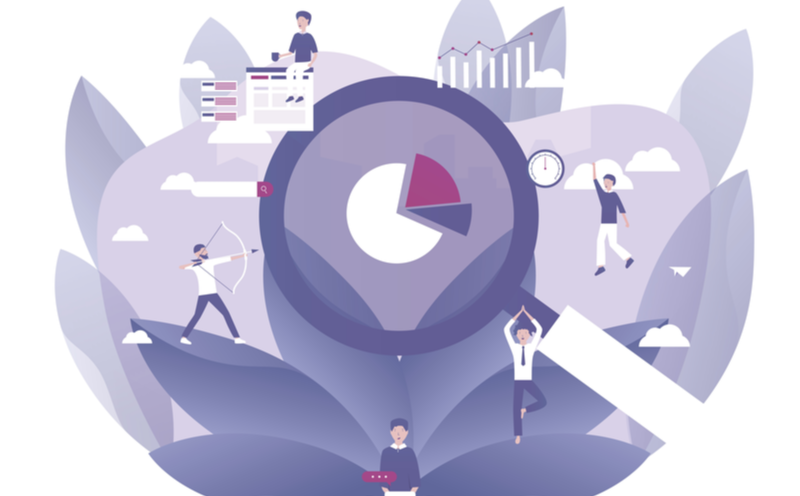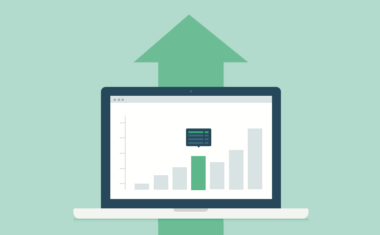How To Become a Data Analyst Without a Degree [Career Guide]
![How To Become a Data Analyst Without a Degree [Career Guide]](png/how-to-become-a-data-analyst-without-a-degree-career-guide.png)
In this article
With data analysts in such high demand, it’s a great time to consider pivoting into this exciting and growing field. The field is expected to grow 25% by 2030, far outpacing growth in other sectors.
If you’re thinking about becoming a data analyst, you may be wondering if you need a college degree to make this transition. Don’t fret if you don’t have one. In this article, we’ll cover the skill sets you’ll need to become a data analyst without a college degree.
Can You Become a Data Analyst Without a Degree?
Many entry-level data analyst jobs do require a college degree, but it doesn’t need to be in data analytics or a STEM-related field. In fact, many hiring managers extol the virtues of hiring liberal arts graduates for tech positions, particularly for data analysis roles, where critical thinking and communication skills are highly valuable. Regardless of what you majored in, or if you have a degree at all, you’ll need to prove your data analysis skills to land a job. If you can document your skills with a strong portfolio and outside certifications, you’ll be well ahead of the competition.
How Do You Become a Data Analyst Without a Degree?

-
Acquire the Required Data Analytics Skills
-
Learn Data Analytics Techniques and Fundamentals
-
Work on Real-Time Projects and Case Studies
-
Get Certified
-
Create a Strong Portfolio
-
Participate in Competitions
-
Network
If you don’t have a degree in data analytics, you’ll need to find other ways to prove your skills. So you’ll need a strong foundation in the technical, practical, and soft skills that data analysts use in their day-to-day job responsibilities.
Acquire the Required Data Analytics Skills
To become a data analyst, you’ll need to learn the tools that data analysts use, have a thorough understanding of the mathematical principles underlying data analysis, have a command of the soft skills needed to solve problems, and be able to communicate your findings.
The Technical Skills You’ll Need
Programming skills. The two most commonly used programming languages for data analysis are R and Python. They each have their strengths and weaknesses, and there are endless debates about which is best for working with data. If you don’t want to choose a side, learn both so you’ll be prepared for anything.
SQL. SQL stands for Structured Query Language. It’s used to maintain, query, and manipulate data stored in large databases.
Data cleaning and sorting. Data analysts spot trends and patterns in data, which they then use to gather insights and make predictions. However, your predictions are only as good as your data. So data analysts have to make sure the data they’re using is accurate, timely, and relevant. Cleaning and sorting data gets rid of duplicate, inaccurate, and irrelevant data so that you’re not making decisions based on bad information.
Data visualization. Data visualization allows you to share your findings with a wider audience in an easy-to-understand format. Not everyone can derive meaning from looking at a CSV table, but almost everyone can understand data when it’s displayed in intuitive graphs and other visualizations.
Data warehousing. A data warehouse is where you store and manage your data. It needs to be stored securely, but in a manner that’s easy to access and easy to retrieve.
Advanced Excel. Many data analysts work with Excel if they’re doing preliminary work or working with smaller data sets. You’ll need to know to use its advanced functions to extract all of the information you can.
Matlab. Matlab is a high-level programming language and platform that uses computations and algorithms to analyze large amounts of data and provide a visual representation of it.
The Practical Skills You’ll Need

Although programming will do most of the heavy math for you, you still need to understand the mathematical principles underlying data analysis.
Statistics. Statistics is the core of what data analysts do. It’s a field of mathematics that’s concerned with collecting, analyzing, interpreting, and presenting data. Understanding statistics will help you differentiate between good and bad data, and help you make reasonable conclusions.
Mathematics. You’ll also need to know other types of math that are used to build and deploy models for data analysis, including:
- Linear algebra
- Calculus
- Discrete mathematics
The Soft Skills You’ll Need
Unlike some other tech roles, data analysts routinely communicate with people in nontechnical roles. So it’s important that an aspiring data analyst be able to understand the problem they’re trying to solve by talking with subject-matter experts and sharing their findings with stakeholders.
Communication and storytelling. Data analysts start by trying to understand the problem that they’re trying to solve, which involves communicating with non-technical stakeholders. And once you’ve completed your analysis, you’ll be expected to share your findings by crafting a compelling narrative.
Creative thinking. Many people don’t think of data analysis as a creative field. But every step of data analysis—from innovative models to discovering new data collection techniques—benefits from original ideas.
Analytical mindset. An analytical mindset allows you to analyze information, solve complicated problems, and identify patterns.
Learn Data Analytics Techniques and Fundamentals

There are four primary types of data analytics. Each has a different purpose, but all are commonly used for business insights. To be a successful data analyst, you’ll need to be able to understand and implement each of these methods when relevant.
Descriptive Analysis
Descriptive analysis answers the question, “What happened?” This kind of analysis uses current and historical data to illustrate trends and patterns. It’s often the first step in further data analysis. On its own, it’s the simplest and most common type of data analysis. Some examples of descriptive analysis include:
- Financial statement analysis
- Demand trends
- Survey results
- Traffic and engagement results
- Progress towards goals
Predictive Analysis
Predictive analysis answers the question, “What might happen in the future?” This kind of analysis predicts future outcomes based on historical trends. Predictive analysis is more complicated than descriptive analysis. It incorporates the use of machine learning and statistical algorithms. Some examples of predictive analysis include:
- Merchandise planning for retailers
- Predicting equipment failures and future resource needs
- Consumer behavior
- Population trends
- Optimize distribution
Diagnostic Analysis
Diagnostic analysis answers the question, “Why did this happen?” This kind of analysis tries to uncover the root cause of a given phenomenon. Data analysts use diagnostic analysis to help their organizations understand why certain strategies are succeeding or failing. Here are some examples of diagnostic analysis:
- Finding the cause of lost revenue
- Understanding risk factors for data breaches
- Analyzing which marketing campaigns have been most successful
Prescriptive Analysis
Prescriptive analysis answers the question, “What should be done?” This kind of analysis incorporates techniques such as graph analysis, simulation, complex event processing, neural networks, recommendation engines, heuristics, and machine learning. Some examples of prescriptive analysis include:
- Investment decisions
- Content recommendations
- Fraud detection
- Product development
- Scheduling
Work on Real-Time Projects and Case Studies

The best way to learn data analysis is by doing it. Start by analyzing case studies in fields such as business, government, and healthcare. By examining successful case studies, you can see the role data analytics plays in determining advanced metrics and steering growth.
After you’ve studied and understood some existing case studies, start working on live projects. Sites such as Kaggle, GitHub, and Our World in Data provide open-source datasets that you can use to build your own projects. Working on real-life problems will give you experience in executing data analytics projects from beginning to end.
Get Certified
Getting relevant certifications in data analytics is one of the best methods of proving your abilities, particularly if you don’t have a degree. Many companies—such as Cloudera, SAS, and Microsoft—offer certifications on the tools data analysts use. You can improve your chances of getting a job in data analytics with the following certifications:
- SAS Certified Data Scientist
- Cloudera Certified Associate: Spark and Hadoop Developer Certification
- Microsoft Certified Azure Data Scientist Associate
Online courses such as Springboard’s Data Analytics Career Track are a valuable way to document your data analysis skills. With its up-to-date curriculum, a bootcamp can offer you a step-by-step process for acquiring all of the relevant skills you need.
Create a Strong Portfolio
If you don’t have a college degree, and want to land a job in data analytics, your portfolio is the most important aspect of your application. Employers want to see that you have the necessary skills and knowledge and are capable of applying them. They also want to see that you can extract meaning from raw data and use that information to create actionable insights and solutions. If you know what industry you’re interested in working in, include projects that are relevant to that field.
Your portfolio should include examples of all phases of the data analysis life cycle and demonstrate your ability to use tools, including:
- Scraping data
- Cleaning data
- Performing all four types of analysis
- Creating data visualizations
- Writing a story to convey your findings
- Collaborating with others
- Using tools such as SQL, Tableau, R, etc.
Participate in Competitions

Participating in competitions will give you experience conducting real-world data analysis, and also give you the opportunity to connect with your peers. Competitions, such as those hosted by Kaggle, give you a chance to grow your skills by participating in interesting projects. You can also create your own competitions for your community, which is a great chance to demonstrate leadership skills and enhance your resume.
Network
Use your network to land your next job. Keep all of your professional social profiles updated with your skills and certifications. Let your friends, family, and professional connections know that you’re looking for a job. Connect with others. Using networking to tap into the hidden job market is more effective than blindly answering ads, although you should do both.
You’re more likely to get seriously considered for a job if you’ve been personally recommended, so don’t be afraid to reach out to people you know.
Data Analytics Tools You Should Be Familiar With

There are some tools that almost all data analysts use, regardless of what industry they work in. These are tools you should be familiar with if you want to land a data analytics job without a college degree.
Tableau
Tableau is a very powerful data analysis tool. It lets you create a dashboard with interactive maps and stories for exploring and analyzing data. Tableau’s intuitive UI allows users to answer questions and make connections with the data. Relationships and patterns are easy to explore. Tableau has a range of offerings, including mobile, web, and desktop applications.
SAS
SAS stands for Statistical Analytics Software. It’s a tool for analyzing statistical data. You can automate the process of running SQL queries with macros that allow you to retrieve, analyze, and issue reports on statistical data. SAS is a proprietary software, whereas R and Python are both open source.
SAS can handle large datasets (with a simple syntax) that don’t require previous programming experience. With SAS, you can easily test and analyze algorithms. Its built-in error log helps with debugging, and it has enhanced security features that prevent remote downloads without a license.
Power BI
Microsoft’s Power BI is another data analysis and visualization tool that provides powerful business insights. It lets you visualize your data and share it across your organization. You can even embed it into your website or app. Its versatility comes from its individual components to create customizable solutions. It offers a free desktop version for use with Windows computers that lets you:
- Connect with data
- Transform and model data
- Create graphs and charts
- Create a collection of visuals on a dashboard
- Share reports with others
It also offers a premium version called Power BI Pro that contains even more features, such as the ability to:
- Embed Power BI visuals into Power BI apps
- Integrate with other Microsoft products such as Azure
- Create workspaces for collaborative efforts
- Share data and dashboards with other Power BI users
Apache Spark
Apache Spark is a fast, flexible, developer-friendly, open-source platform that does large-scale data processing and machine learning. It can also distribute data processing across multiple computers to help facilitate machine learning tasks that require more computing power. It’s used by major companies in all industries, including banks, telecommunication companies, and major tech companies like Apple, Facebook, IBM, and Microsoft.
How Much Can You Make as a Data Analyst?
Data analysts’ salaries vary based on education, experience, local, and skills. According to data from Payscale, here are some typical ranges:
Entry-Level Data Analyst
An entry-level data analyst can expect to earn an average salary of $57,492. Once they have one to four years of experience, they earn an average of $62,193.
Mid-Level Data Analyst
A mid-level data analyst has five to nine years of experience. At this point, they earn an average of $70,302.
Senior-Level Data Analyst
A senior-level data analyst who has been working for 10 to 19 years earns an average of $71,879. Those who’ve worked over 19 years earn an average of $73,452.
Entry-Level Data Analytics Jobs You Can Apply To
Here are the types of jobs you’ll be qualified to do after you learn basic data analysis skills:
Junior Data Analyst
A junior-level data analyst collects, manages, and analyzes data. You’ll work under someone with more experience who can help you develop your skills. Some common job responsibilities for junior data analysts include:
- Collecting data
- Cleaning data
- Producing reports
- Working on dashboards
- Learning to use and manage databases
Operation Analyst
An operations analyst identifies and solves issues related to business performance. Some of your job duties may include:
- Reviewing company policies and processes
- Analyzing data to identify business opportunities
- Working with management to set and achieve company goals
- Making recommendations to improve performance and processes
- Producing monthly reports with descriptive analytics
- Staying up-to-date on market trends
Business Analyst

A business analyst assesses a company’s performance and thinks of ideas to improve operations. Some jobs duties for a business analyst are:
- Gathering and analyzing data to look for new opportunities for expansion
- Working with stakeholders to implement solutions
- Assisting with managing ongoing projects
- Collaborating with other departments to optimize outcomes
- Recommending improvements based on your analysis
Quantitative Analyst
Quantitative analysts use statistics and mathematics to analyze data to assess risk and find solutions to business problems. Some job duties associated with this role include:
- Collecting and analyzing large sets of data
- Building statistical models
- Validating the models to ensure their accuracy and value
- Performing risk management with data analysis
Analytics Consultant
An analytics consultant develops strategic business plans based on data analytics. Some of the responsibilities of an analytics consultant include:
- Recommending effective data governance and management practices
- Designing and managing databases
- Building data models to improve processes
- Identifying and fixing gaps in the data journey within an organization
- Evaluate potential problems or opportunities with data analysis
- Create reports, dashboards, and other data visualizations
Get To Know Other Data Analytics Students
Sarah Ganihar
Business Intelligence Analyst at Amazon Web Services
Gilles Ngomeni
Sales Analyst at Medline Industries
Rahil Jetly
Sales Operations Manager at Springboard
FAQs About Becoming a Data Analyst
Can Someone With No Programming Background Get Into Data Analytics?
Yes. However, you will have to learn some programming in order to do data analytics, as many of the most robust tools used in data analysis require programming. These include R and Python, which are full-scale programming languages. You’ll also need to know the database management language SQL.
Don’t worry if you don’t currently have any programming experience. You can learn to program while learning how to be a data analyst. It’s one of the many new skills you’ll pick up on your learning journey.
Can You Learn Data Analytics on Your Own?
It is possible to learn data analytics on your own, but it’s a pretty big undertaking. Having a structured learning plan and an instructor who can offer feedback will make the process much smoother, as there’s a lot of ground to cover when it comes to teaching yourself to analyze data, including higher-level math such as calculus and statistics.
A data analytics bootcamp offers a happy medium between learning independently and getting your degree. Bootcamps are shorter, focused programs designed to get you career-ready in the least amount of time. Bootcamps will cover the fundamental technical skills you need to know, as well as the areas employers are most focused on, such as strategic thinking, problem-solving, and communication.
Good programs offer support, guidance, and accountability. You’ll be paired with a mentor who can help you when you get stuck and provide guidance in starting your career. Bootcamps also usually include career-boosting resources such as practice interviews and networks that can help you find opportunities.
How Long Does It Take To Learn Data Analytics?
If you spend 15 to 20 hours per week studying through a structured program, such as a bootcamp, you can probably learn the fundamentals of data analytics in six months. It will take about four years to graduate with a degree in data analysis or a related field. It can also take much longer if you’re trying to learn on your own and put together your own resources.
Quality bootcamps offer a well-developed curriculum that has been designed to optimize learning. They also prioritize teaching the most in-demand skills and methods that employers are looking for. The guidance and structure that you get from a bootcamp can shave a lot of time off of your learning journey and get you career-ready faster.
Since you’re here…
Switching to a career in data analytics is possible, no matter your background. We’ve helped over 10,000 students make it happen. Check out our free data analytics curriculum to gauge your interest, or go all-in with our Data Analytics Bootcamp.



![SQL Interview Questions [2022 Prep Guide]](png/sql-interview-questions-2022-prep-guide-380x235.png)

